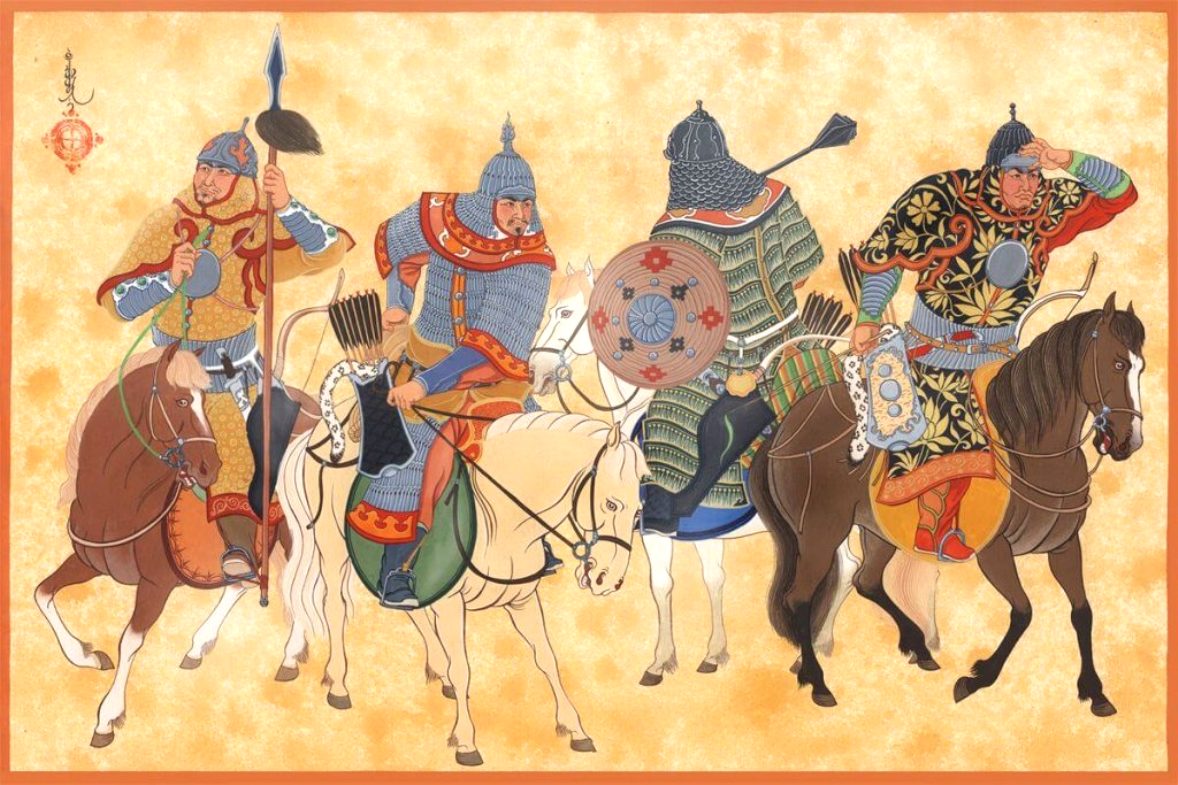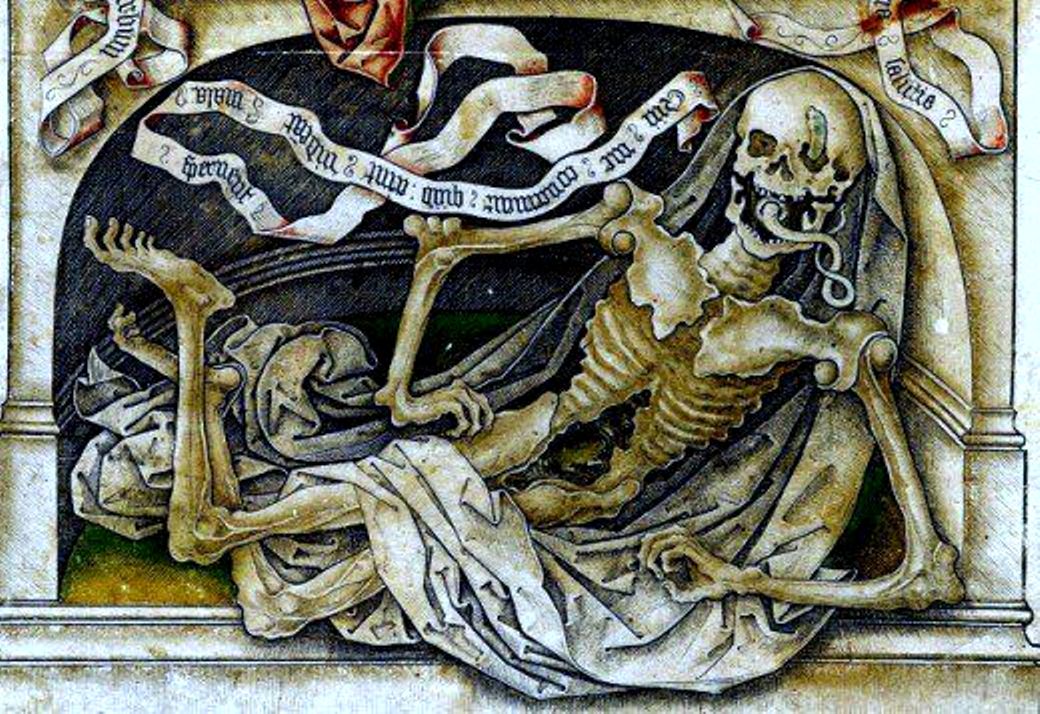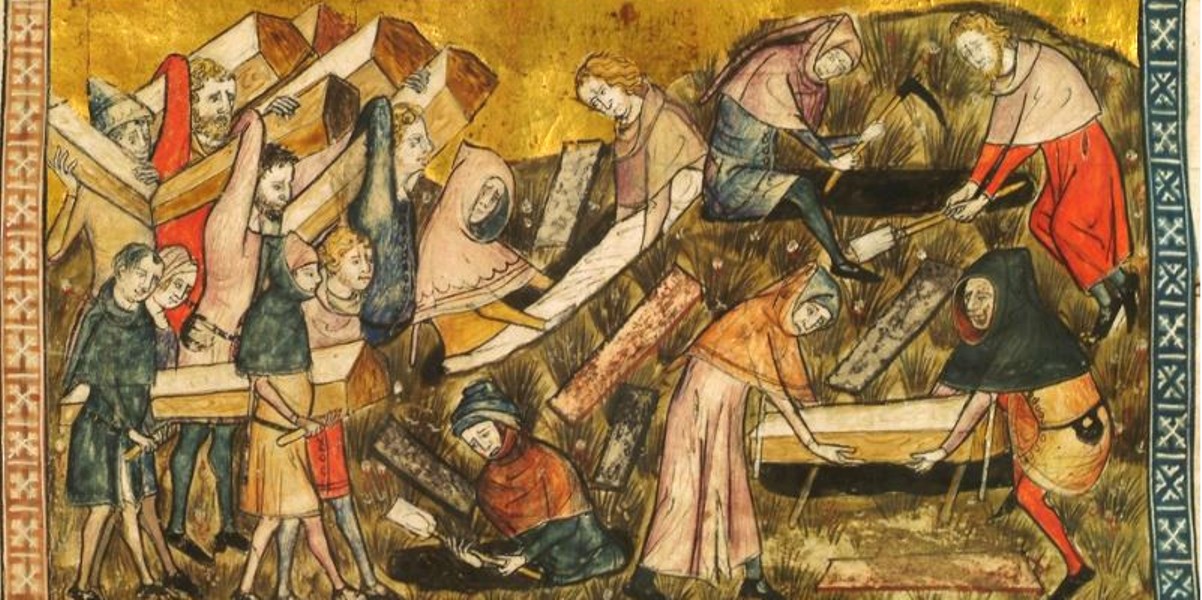
On this month's Morbidly Fascinating Page:
The first known case of biological warfare--catapulting bubonic plague victims over the wall in 1346

What was the Caffa incident?

The Caffa (also spelled Kaffa) incident was described in 1348 or 1349 by Gabriel de' Mussis, a notary born in Piacenza north of Genoa. De' Mussis made two important claims: plague was transmitted to the citizens of Caffa by the hurling of diseased cadavers into the besieged city, and Italians fleeing from Caffa brought the plague into the Mediterranean seaports.
This narrative contains some startling assertions: that the Mongol army hurled plague-infected cadavers into the besieged Crimean city of Caffa, thereby transmitting the disease to the inhabitants; and that fleeing survivors of the siege spread plague from Caffa to the Mediterranean Basin.
Given the complex ecology and epidemiology of plague, it may be an oversimplification to assume that a single biological attack was the sole cause of the plague epidemic in Caffa and even the 14th-century plague pandemic in Europe. Nonetheless, the account of a biological warfare attack in Caffa is plausible and consistent with the technology of that time, and the siege of Caffa is a powerful reminder of the terrible consequences when diseases are used as weapons.
See more HERE
What did Gabriel de' Mussi say?

Narrative written by Gabriel de' Mussis above
Gabriele de' Mussi, born circa 1280, practiced as a notary in the town of Piacenza, over the mountains just north of Genoa. THis practice was active in the years 1300–1349. He is thought to have died in approximately 1356.
"The dying Tartars, stunned and stupefied by the immensity of the disaster brought about by the disease, and realizing that they had no hope of escape, lost interest in the siege. But they ordered corpses to be placed in catapults and lobbed into the city in the hope that the intolerable stench would kill everyone inside. What seemed like mountains of dead were thrown into the city, and the Christians could not hide or flee or escape from them, although they dumped as many of the bodies as they could in the sea. And soon the rotting corpses tainted the air and poisoned the water supply, and the stench was so overwhelming that hardly one in several thousand was in a position to flee the remains of the Tartar army. Moreover one infected man could carry the poison to others, and infect people and places with the disease by look alone. No one knew, or could discover, a means of defense."
The account closes with an extended description of the plague in Piacenza, and a reprise of the apocalyptic vision with which it begins.
See more HERE
How was it accomplished?

Though the definitions for types of catapults vary, each share one goal: to hurl an object through the air. The word "catapult" comes from the Latin word catapulta and the Greek word katapaltēs, meaning "to hurl."
Counterweight Catapult (trebuchet): The trebuchet is perhaps one of the most iconic types of catapults. It featured a large wooden frame with a long throwing arm and a counterweight at the opposite end. You would load a projectile into a sling attached to the throwing arm. When you release the counterweight, it fell, causing the throwing arm to swing upward, launching the projectile in a high arc. Trebuchets had a distinctive appearance with their tall frame and long arm.
Catapults can throw objects a fair distance — 500 to 1,000 feet (150 to 300 meters) is common. It is surprising how much energy they can store.
See more HERE

What a medieval catapult might have looked like
Who were at war with each other?

Mongol army
Caffa (now Feodosija, Ukraine) was established by Genoa in 1266 by agreement with the Kahn of the Golden Horde. It was the main port for the great Genoese merchant ships, which connected there to a coastal shipping industry to Tana (now Azov, Russia) on the Don River. Trade along the Don connected Tana to Central Russia, and overland caravan routes linked it to Sarai and thence to the Far East).
In 1343 the Mongols under Janibeg (who succeeded Özbeg in 1340) besieged Caffa and the Italian enclave at Tana, following a brawl between Italians and Muslims in Tana.
Relations devolved into hostility during the rule of Jani Beg Khan, who sought to crush Italian (both Genoese and Venetian) power in the region. In 1343, a crisis over residency and trade between Venice and Golden Horde authorities led to joint Genoese-Venetian action against the horde, blockading Mongol ports. The conflict continued into 1345, when Mongol forces besieged Caffa. The siege dragged on into 1346, with the Mongol army being unable to capture the city. During the siege, an outbreak of the plague drove the Mongols into retreat.
About the 14th Century Plague


The Bubonic Plague was a devastating global epidemic of bubonic plague that struck Europe and Asia in the mid-1300s. The majority of it occurred between 1346 and 1350.
The plague arrived in Europe in October 1347, when 12 ships from the Black Sea docked at the Sicilian port of Messina. People gathered on the docks were met with a horrifying surprise: Most sailors aboard the ships were dead, and those still alive were gravely ill and covered in black boils that oozed blood and pus. Sicilian authorities hastily ordered the fleet of “death ships” out of the harbor, but it was too late: Over the next five years, the Black Death would kill more than 30 million people in Europe—almost one-third of the continent’s population.
Even before the “death ships” pulled into port at Messina, many Europeans had heard rumors about a “Great Pestilence” that was carving a deadly path across the trade routes of the Near and Far East. Indeed, in the early 1340s, the disease had struck China, India, Persia, Syria and Egypt.
The plague is thought to have originated in Asia over 2,000 years ago and was likely spread by trading ships , though recent research has indicated the pathogen responsible for the plague may have existed in Europe as early as 3000 B.C.
Europeans were scarcely equipped for the horrible reality of the Black Death. “In men and women alike,” the Italian poet Giovanni Boccaccio wrote, “at the beginning of the malady, certain swellings, either on the groin or under the armpits…waxed to the bigness of a common apple, others to the size of an egg, some more and some less, and these the vulgar named plague-boils.”
The Bubonic Plague attacks the lymphatic system, causing swelling in the lymph nodes. If untreated, the infection can spread to the blood or lungs.
See more HERE
What caused the plague?

Oriental rat flea
The Bubonic Plague (referred to at the time as The Great Pestilence, but often known today as The Black Death) resulted in the deaths of an estimated 75-200 million people—approximately 30% of Europe’s population. It spread from central Asia on rat fleas living on the black rats (rattus rattus) that were regular passengers on merchant ships, and traveled towards Europe as people fled from one area to another.
Medieval doctors thought the plague was created by air corrupted by humid weather, decaying unburied bodies, and fumes produced by poor sanitation. The doctors at the time called the "bad air" miasmas, and it was thought to travel like fog or smoke. Their solution was to carry posies of flowers to counter the smell and sweeten the miasmas and thereby stay safe.
They also believed that the plague was sent by God as punishment for their sins. There was a movent of extreme pentitants called Flagellants who demonstrated their religious fervor and sought atonement for their sins by vigorously whipping themselves in public displays of penance.
In reality, the plague was caused by the bacterium, Yersinia pestis. Humans mostly contracted plague after being bitten by a rodent flea that was carrying the plague bacterium.Without antibacterial therapy, the disease is associated with a high fatality rate, ranging from 40% (bubonic plague) to nearly 100% (septicemic and pneumonic plague).
The plague doctors

The bird mask-wearing plague doctors did not occur in the 14th Century outbreak. In fact, doctors did not wear plague outfits until the next plague outbreak of 1665-1666, in the 17th Century.